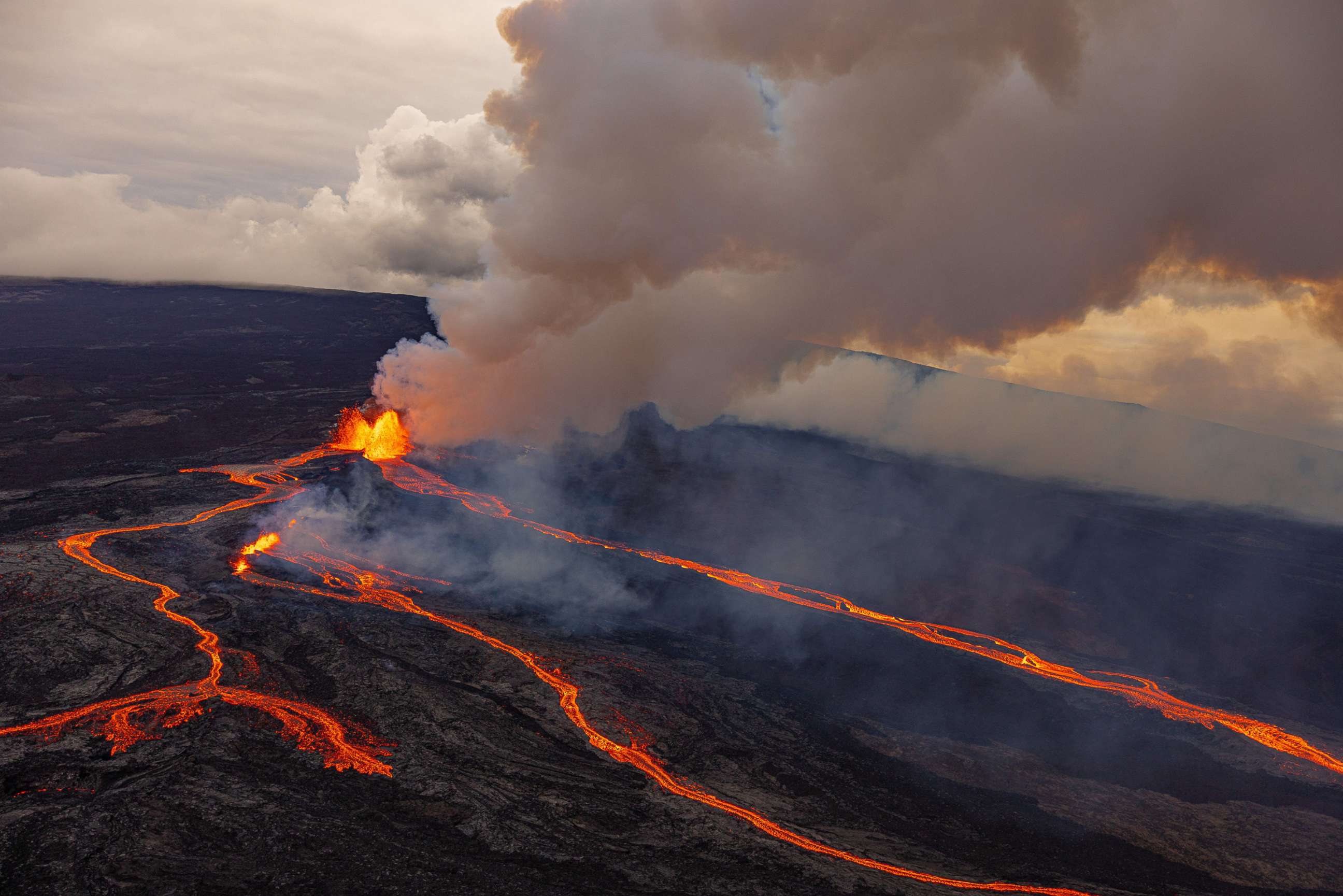A recent history of volcanic eruptions and their impact, as Mauna Loa erupts
The Mauna Loa volcano erupted on Sunday, spewing ash and lava on Hawaii's Big Island, making it the first eruption from the world's largest active volcano in almost 40 years.
According to the U.S. Geological Survey, there are around 1,350 potentially active volcanoes around the world outside of the continuous range of volcanoes as part of the Mid-Atlantic Ridge.
In the U.S. and its territories, there are 161 potentially active volcanoes, including Mauna Loa.

Here are some of the biggest volcanic eruptions in the 21st century based on the Volcanic Explosivity Index (VEI), which measures the size of explosive eruptions based on intensity and magnitude:
The Hunga-Tonga-Hunga-Ha'apai

VEI: 5
On Jan. 15, The Hunga-Tonga-Hunga-Ha'apai volcano erupted, causing widespread destruction to the Pacific Island Nation of Tonga, bringing a nearly 50-foot tsunami that crashed ashore, destroying villages and creating a sonic boom that twice-circled the globe.
The eruption is the largest volcanic eruption in the 21st century, the largest since the 1991 eruption of Mount Pinatubo in the Philippines, according to the Lawrence Livermore National Laboratory.
Most of the eruption happened underwater in the South Pacific Ocean and created a massive plume of water vapor that went into the Earth's stratosphere.
Puyehue-Cordón Caulle

VEI: 5
The Puyehue-Cordón Caulle eruption occurred on June 4, 2011, in Chile and neighboring Argentina. Thick ash disrupted air travel in the area, with Argentina's Agriculture Ministry declaring a state of emergency in some provinces because embers from the eruption disrupted tourism and endangered livestock.
According to the Smithsonian Institution's Global Volcanism Program, an explosion from Cordón Caulle produced an over three-mile-wide ash-and-gas plume that rose 40,000 feet in the air.
Mount Semeru

VEI: 4
The Mount Semeru volcanic eruption happened on Dec. 4, 2021, in Java, Indonesia, the country's most populated island.
Dozens of people died, with many people reported missing, according to the Global Volcanism Program. Thousands of residents were also displaced.
Fukutoku-Okanoba

VEI: 4
The Fukutoku-Okanoba volcanic eruption occurred on Aug. 13, 2021, near Japan. Fukutoku-Okanoba is an underwater volcano, according to the Global Volcanism Program.
According to NASA, plumes from the eruption reached as high as 11 miles above the surface.
Soufrière St. Vincent

VEI: 4
Soufrière St. Vincent volcano began showing eruption activity on Dec. 27, 2020, culminating in a series of explosions in April 2021.
The volcano, also known as the La Soufrière Volcano, is located on the eastern Caribbean island of St. Vincent. The eruptions forced over 16,000 St. Vincent residents to evacuate their homes.
According to official estimates, the ash plume reached as high as six miles into the air, with the wind taking it as far as 25,000 feet east of St. Vincent.
Before the eruption, the volcano was inactive for nearly 42 years.
ABC News' Julia Jacobo contributed to this report.





